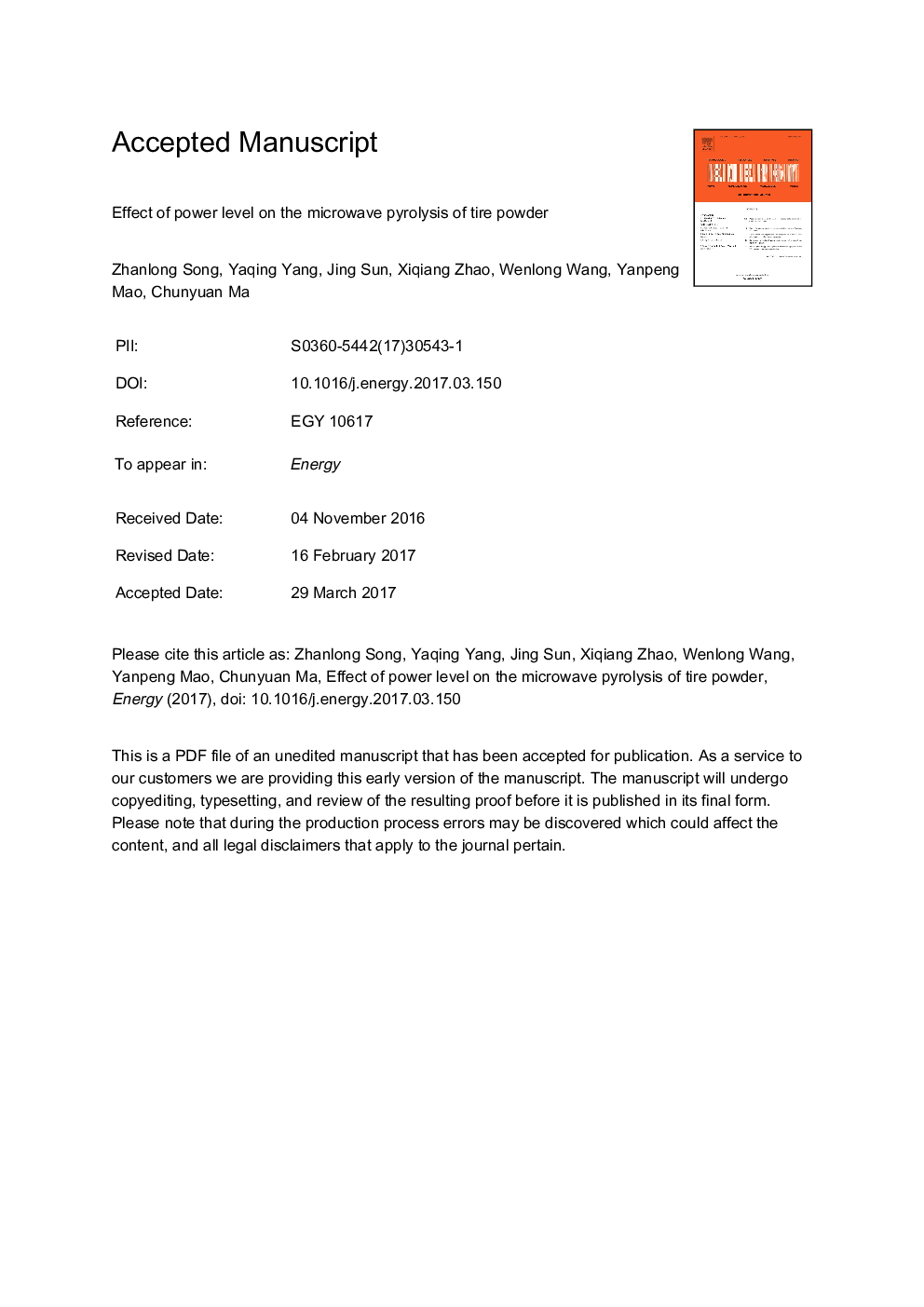| Article ID | Journal | Published Year | Pages | File Type |
|---|---|---|---|---|
| 5476833 | Energy | 2017 | 30 Pages |
Abstract
The pyrolytic performance of tire powder treated under different specific microwave powers (SMP), powers per 1Â g sample, (9, 15, and 24Â W/g) was investigated. The experimental results show that the pyrolysis level of tire powder was enhanced with increasing SMP. The maximum yields of liquid product (45%) and gas product (18.5%) were obtained at 15 and 24Â W/g, respectively. In addition, the conversion rates of main organic elements transferred to three-phase products were calculated. All of the evolved gases were collected in successive gasbags, and 80% of the volumes were low-molecular-weight gases like H2, CH4 and C2H4; the fraction of gases generated increased with increasing SMP. The liquid products contained a large amount of aromatic hydrocarbons, and more limonene (nearly 10%) was produced in microwave pyrolysis than in conventional pyrolysis of tires. The proximate and ultimate analyses of the solid product showed a slight difference in composition as a function of SMP. Furthermore, there may be a competitive reaction between the sulfur release to the volatiles and sulfur fixation, forming ZnS; the amount of ZnS varied with SMP. The energy recovery was examined, which provides a useful measure of the energy efficiency of microwave pyrolysis process.
Related Topics
Physical Sciences and Engineering
Energy
Energy (General)
Authors
Zhanlong Song, Yaqing Yang, Jing Sun, Xiqiang Zhao, Wenlong Wang, Yanpeng Mao, Chunyuan Ma,
